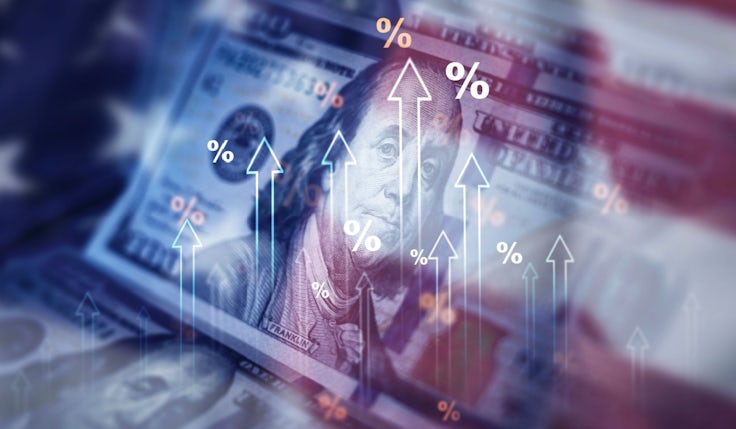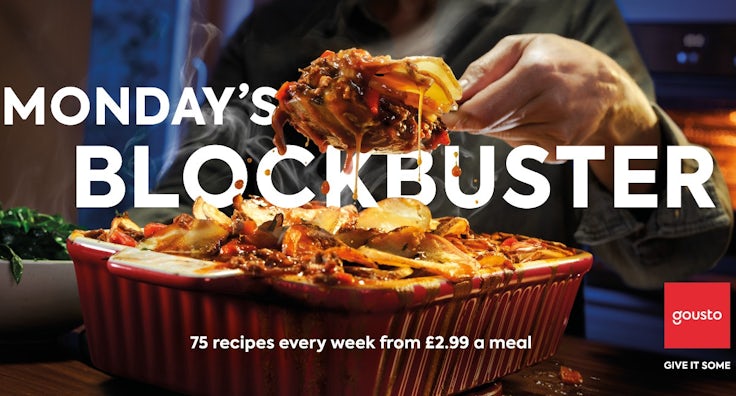What marketers can do in a time of tariffs
Given the erratic nature of Trump’s tariffs, marketers need to be prepared and have a scenario and a strategy for each future possibility.

Just as the economy settled down and we were back to some sort of normality, after Covid in 2020 and inflation in 2022 to 2024, another economic shock – President Trump’s tariffs.
It’s another punch in the face.
Tariffs are taxes on products that cross a border into America. A year ago, they averaged a barely noticeable 2.2%. They’ve since got as high as 30% on average before dropping back to 14.2%.
They’re there to make it harder for foreign businesses to compete in the US and so easier for American businesses to grow and generate jobs.
But tariffs also add cost. If you’re in the UK and you want to sell in the US, you now have to pay more, and the same is true if you’re in the US and want to buy parts and components from abroad.
It puts businesses between a rock and a hard place. To maintain profitability, you want to pass additional cost onto consumers through a price rise. But then again, when consumers see a higher price, they buy less of your stuff.
What marketers can do is report on how tolerant customers are to price rises and help wargame just how much cost can profitably be passed on.
The effect of tariffs
It is actually possible that the tariff policy could make America great again.
There is historical precedent: Tariffs were an important part of South Korea’s transition from small and backward into a large modern economy. The tariffs protected specific sectors like chip manufacturing and the government also offered tax breaks, subsidised education, and raw materials.
But most economists are sceptical.
Uninterrupted trade allows all countries to make what they make best and buy the rest.
This, unsurprisingly, turns out to be a win-win most of the time. Even economists who like tariffs note that the US hasn’t done any of the other things the Koreans did and find it hard to forecast them getting the same success.
If the long-term benefit of tariffs is uncertain, the short-term costs are guaranteed.
Apple, for example, produces 90% of its iPhones in China, meaning that tariffs apply when they’re sold in the US. And, even though Americans love a Land Rover Defender, because they are built in the EU, tariffs add circa $25,000 to their cost.
The UK economy will for sure take a hit. Britain sent almost £60bn worth of cars, pharmaceuticals, machinery, and electronics to the US last year. This year, because of tariffs, doing the same again may not be profitable.
Decisions decisions
For some businesses, the additional cost is enough to prompt moving the factory. For example, Apple is moving production from China to India where tariffs into the US are lower, and Jaguar Land Rover has refused to rule out moving all the way to the US.
For most though, the decision is about whether or not to increase price. If costs go up, the choice is to pass it onto consumers via price or absorb it into lower profits.
If you have good MMM/econometrics, you may already have the data point your CFO really needs – that is your price elasticity. It’s the percentage of sales you lose by putting the price up by 1%.
If it’s only a little bit negative, say -0.5%, you can pass cost increases on to your customers, as most will continue to buy, only a few will switch away. But if your price elasticity is more negative, say -2%, passing the cost increases on would mean losing too many sales.
 The chart is an example of using price elasticity to decide which of a portfolio of products can pass on tariff costs profitably, and which can’t.
The chart is an example of using price elasticity to decide which of a portfolio of products can pass on tariff costs profitably, and which can’t.
Even though tariffs applied to all of the products, the wise choice here was to only pass the costs on for product B. Because B has a strong brand and few direct competitors, it can carry a higher price without a collapse in sales.
Plan A, B, C, D, and E
It matters whether tariff-related cost increases will be long-lasting or not. Brand marketing can go a long way to supporting higher prices, but its full benefits don’t appear immediately.
Tariffs on British-made cars were originally going to be 25%; they’ve since been negotiated down to 10%, but in the future, they could go up again, go down to 5%, or even disappear. President Trump has so much form for changing course that city traders even have an acronym for it: TACO, Trump always chickens out.
What marketing can do to help is have a scenario and a strategy for each future possibility.
 The chart above shows plan A for an example business. If the tariff rate stays at 10% throughout next year, it’s better for profit to pass the cost on to consumers. Profit will go down, but not as much as it would if this business simply absorbs the cost.
The chart above shows plan A for an example business. If the tariff rate stays at 10% throughout next year, it’s better for profit to pass the cost on to consumers. Profit will go down, but not as much as it would if this business simply absorbs the cost.
Not shown are plans B, C, D, and E. These identify the best strategy if the tariff rate is higher, lower, or removed, and they show what happens in year two if brand marketing improves customers’ tolerance to high prices.
There are also permutations where competitors increase price, and where they decide not to, and optimal plans for price and direct marketing, wherever risks and opportunities appear.
What marketing can do in an uncertain economy is have these scenarios in place and the capability to rerun them on the hop, so that there’s always a way to respond to a changing world.
Mike Tyson famously said, “Everyone’s got a plan until they get punched in the face.” But for CMOs and CFOs now, that’s not enough. The punches are going to keep on coming, and you need to know how you’re going to duck and dive.







